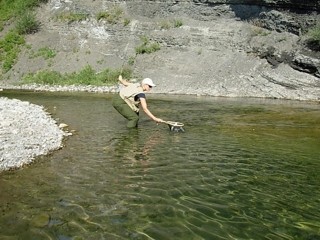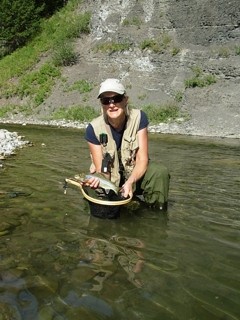
For nymph and dry fly anglers, a drag-free drift is critical to success. More than 90% of the time a trout will refuse a fly that appears to be unnaturally pulled across or through the water. They will often shut down completely if you do it more than once. To ensure a drag-free drift, read the stream currents and position yourself in the optimal location prior to making your first cast. This can sometimes mean fishing from directly below a feeding fish or productive looking lie. At other times you may need to be across from your target zone and, in some instances, the only solution is fishing from directly above the water where fish may be holding. Too often we get a little lazy and just plough our way upstream, casting as we go. The angler who takes the time to assess every productive-looking lie determining the best position from which to ensure a good drift is the fisherman who hooks the most fish.



For nymph and dry fly anglers, a drag-free drift is critical to success. More than 90% of the time a trout will refuse a fly that appears to be unnaturally pulled across or through the water. They will often shut down completely if you do it more than once. To ensure a drag-free drift, read the stream currents and position yourself in the optimal location prior to making your first cast. This can sometimes mean fishing from directly below a feeding fish or productive looking lie. At other times you may need to be across from your target zone and, in some instances, the only solution is fishing from directly above the water where fish may be holding. Too often we get a little lazy and just plough our way upstream, casting as we go. The angler who takes the time to assess every productive-looking lie determining the best position from which to ensure a good drift is the fisherman who hooks the most fish.




